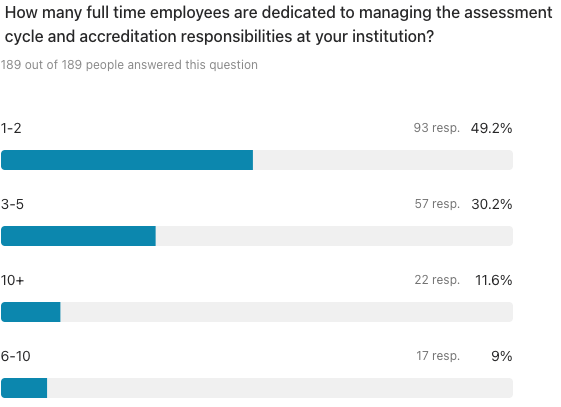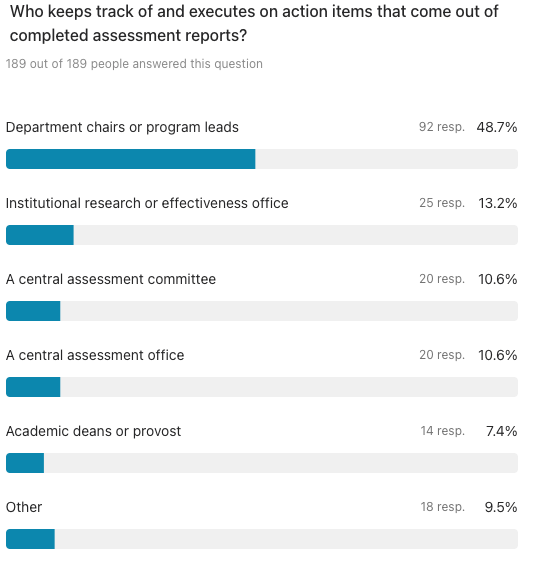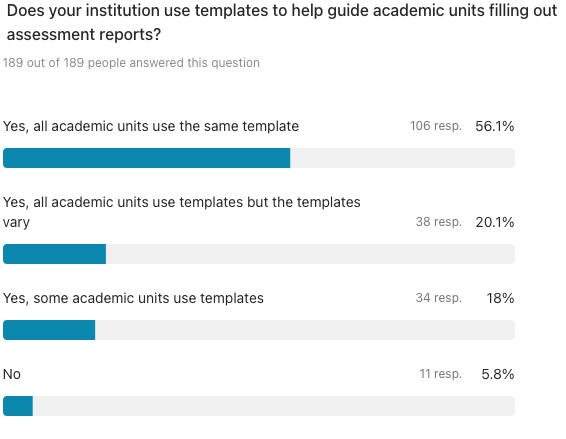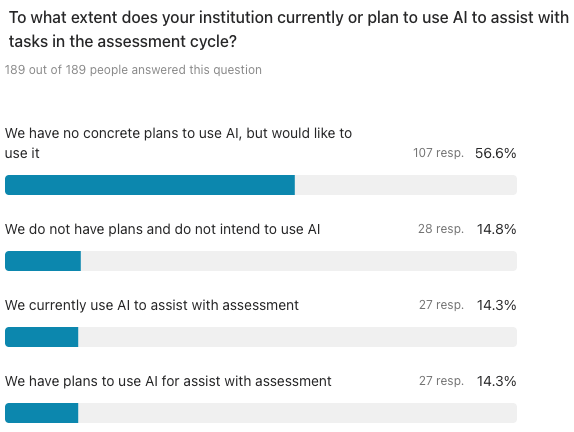A Conductor of Partnerships: Dr. Tom Nevill on Innovation and Apprenticeships at GateWay Community College
Located in the metropolis of Phoenix, Arizona, GateWay Community College is at the center of both growing industries and a growing population.

Assessment has long been a cornerstone of higher education, serving as a function to both meet compliance requirements and ensure quality. The assessment process is central to measuring student learning outcomes, identifying areas for enhancement, and ultimately improving program quality. However, despite the critical role assessment plays, many continue to view it as a bureaucratic exercise that consumes valuable faculty time.
To better understand how institutions approach academic assessment, current practices, and challenges, Coursedog recently conducted a survey of higher education assessment professionals across the United States and Canada. The survey, conducted from June to July 2025, heard from 189 assessment professionals.
The results paint a nuanced portrait of the current state of academic assessment. Three in four institutions reported that they did not incur any violations during their last assessment cycle, yet institutions still struggle in critical areas like data analysis, faculty buy-in, and closing the loop. The results included throughout aim to broaden our collective understanding of how academic assessment is conducted and where there are opportunities for improvement.
Even with the full-spectrum of responsibilities that come with running assessment across an institution, almost half (49%) of respondents indicate that they only have one to two full-time employees dedicated to assessment. An additional 30% report three to five full-time employees for assessment.

Despite a small number of staff dedicated to assessment, it’s no surprise that other stakeholders play a critical role advancing the work and taking action on results. For example, department chairs or program leads most frequently own tracking and executing on action items that come out of completed assessment reports (49%). While this group most commonly takes charge of this important work, other groups such as the institutional research office, assessment committees, and assessment offices also play a critical role in driving processes forward.

To help standardize the assessment process and make things easier for both departments and administrators, many institutions use standard processes and procedures. For example, a majority (60%) report that all academic units follow the same timeline and process for their assessment cycles, fostering a unified approach. Similarly, over half (56%) report that all academic units use the same institution-wide template for filling out assessment reports. Even among colleges and universities who don’t use institution-wide templates, 20% use templates with departmental differences, and 18% report some units using them.

However, the consistency across processes and templates stands in stark contrast to the use of technology. Institutions overwhelmingly rely on multiple, often disparate, systems and platforms to manage their assessment activities. A staggering 90% of institutions use two or more solutions. Beyond just two solutions, 81% report using three or more, 64% use four or more, and 45% juggle five or more platforms. Common “other” solutions cited include Microsoft products (e.g., SharePoint, Word, Teams) and various homegrown systems. This suggests that while institutions are achieving process and template standardization, they are doing so within a highly fragmented technological environment, potentially creating inefficiencies in data aggregation and analysis.

Despite the promise of assessment and its potential for transformative impact, administrators still face significant hurdles achieving their goals. Data analysis and securing faculty buy-in emerged as the top concerns for administrators when it comes to assessment. Specifically, “analyzing data and acting on it” (also known as “closing the loop”) ranked as the top concern for 33% of respondents, while “lack of buy-in from faculty” closely followed at 31%.

Engaging faculty can be particularly challenging, as faculty balance a myriad of other responsibilities including teaching, research, mentorship, and more. Respondents reported that the biggest challenges engaging faculty include:
It is not surprising that if faculty aren’t bought in, it is more difficult to close the loop. Faculty arguably have the most impact on assessment outcomes as the ones developing curriculum and delivering it in the classroom. Given this, it’s important that we ask: How can we ease the assessment burden on faculty to engage them? How can we move beyond compliance and take real action on assessment results?
With the number of AI solutions exploding over the past couple of years, many are evaluating how AI fits into their assessment processes. While only a small percentage of institutions (14%) report currently using AI in their assessment practices, the majority of institutions report that they either have plans or would like to use AI in their assessment practices. 14% report that they have concrete plans to use AI while another 57% report that they would like to use AI, despite no concrete plans at the moment.

On the other end of the spectrum, only 15% report that they both have no plans to and don’t intend to use AI for their assessment processes. With few institutions currently using AI, but many planning or hoping to use it, it will be worth watching how tools evolve to meet institutional needs and what areas of assessment are most ripe for acceleration by AI.
Looking ahead, the burgeoning interest in AI suggests a future where technology could alleviate some of these burdens, streamlining processes and enhancing analytical capabilities. However, effective and impactful assessment will ultimately require ongoing collaboration, strategic data analysis, and a renewed focus on demonstrating how assessment directly contributes to positive student outcomes.